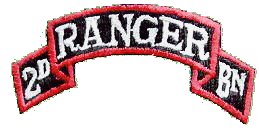6-8 DECEMBER, 1944 - (RHINELAND CAMPAIGN)

By Lt. Frank U. Roquemore
BATTALION MISSION
At approximately 2100, 6 December, the Ranger battalion was released from V Corps reserve to the 8th Division. (30) The mission assigned to the Rangers was the capture of the high ground east of the town BERGSTEIN and the small ridges running south and east from BERGSTEIN. (See Map D) Capture of this critical terrain, later known as Hill 400, was deemed essential as from this high point, observation of the whole area was possible, including the key town of SCHMIDT and the Roer River dams. (29)
The enemy was utilizing this terrain as observation points to place observed fire on friendly units throughout this portion of the Corps area. (29)
After receiving orders for this mission, the Ranger's battalion commander issued a fragmentary order alerting the battalion and directing the company commanders to report for orders and instructions (29)
On reporting to the command post, the company commanders were given the situation and battalion mission. An attack was to take place as soon as the battalion could move to the vicinity of BERGSTEIN. Companies A, B and C would seize and hold the small ridges running south and east from BERGSTEIN. These companies would prepare defensive positions to repel possible enemy attacks from south or east, and also be prepared to act as a counterattack force if necessary. The other three companies, D, E and F, would attack from BERGSTEIN, seize and hold the high ground (Hill 400) east of the town. These companies would organize defensive positions against enemy attacks from the east and northeast. Tentative time set for the main attack against Hill 400 was 0700, 7 December. The preliminary operation southeast of the town would be initiated on arrival of the battalion at BERGSTEIN. Success of the preliminary operation would determine the exact time of the main attack. (32, 33)
While the company commanders were with the battalion commander, the companies were rolling their packs and bedrolls and securing equipment to move out. A one day supply of K rations had been previously issued to each man for such an occasion as this, and as each man had his basic load of ammunition there were no supply problems. In spite of the training period and practicing 'alerts', there was still some confusion. This, however, was due to the darkness and strict blackout. (32)
The company commanders returned to their companies at 2200 and briefed their platoon leaders. Due to the urgency of time, the briefing was incomplete. The platoon leaders attempted to brief the platoon sergeants and section leaders but under the circumstances could not give them the proper orientation. After arriving at BERGSTEIN sufficient time -was available to orient all the subordinate leaders, but prior to leaving the assembly area there were a lot of unanswered questions. (34)
The battalion loaded onto trucks, and moving generally northeast, arrived in the vicinity of HURTGEN. (See Map D) This trip, of approximately ten miles, took over two hours due to blackout, the poor condition or absence of roads and a steady rain which started falling while enroute. Detrucking at HURTGEN, the battalion formed and moved off in column with A Company leading, adopting a five yard interval between men as it progressed. The detrucking at HURTGEN was necessary due to enemy artillery fire on the roads forward and the possibility of the enemy discovering the battalion's presence. (34)

